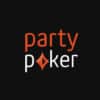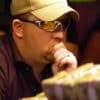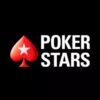I’ve mastered tournament tactics using Nash Equilibrium and game theory, and now I’m here to share my insights.
In this article, I’ll guide you through the strategic world of poker tournaments, unveiling the power of Nash Equilibrium and game theory.
From early stages to the final showdown, I’ll teach you how to implement these tactics for success.
Get ready to level up your game and dominate the tournament scene with precision and strategic prowess.

Understanding Nash Equilibrium
To understand Nash Equilibrium, I’ll explain the concept using a simple example.
Nash Equilibrium is a fundamental concept in game theory, a field that studies strategic decision-making in situations where the outcome of one person’s decision depends on the decisions of others.
It’s a solution concept that identifies the set of strategies where no player has an incentive to deviate unilaterally. In other words, it’s a stable state where players’ strategies are optimal given the strategies of others.
This equilibrium concept has numerous applications in various game theory scenarios, including economics, politics, and biology. Understanding Nash Equilibrium allows us to analyze and predict the behavior of individuals and groups in strategic interactions, making it an essential tool in decision-making and strategy development.
Role of Game Theory in Poker
When it comes to the role of game theory in poker, there are three key points to consider.
First, understanding optimal poker strategies is crucial for maximizing your chances of winning.
Second, decision-making under uncertainty is a fundamental aspect of poker, and game theory provides a framework for making informed choices in unpredictable situations.
Optimal Poker Strategies
I’ve discovered that incorporating game theory into my poker strategies has proven to be an optimal approach. When it comes to bluffing tactics in poker, game theory helps me determine the right frequency and timing of bluffs based on my opponents’ likely hand ranges. It allows me to make strategic decisions by considering the potential outcomes and expected value of each action.
Hand selection is another crucial aspect of poker, and game theory helps me understand the relative value of different starting hands and adjust my ranges accordingly. By applying game theory principles, I can exploit my opponents’ weaknesses and make more informed decisions at the poker table.
Transitioning into the next section on decision-making under uncertainty, game theory provides a framework for analyzing and making optimal choices in situations where information is limited or imperfect.
Decision-Making Under Uncertainty
In the realm of poker, game theory continues to play a vital role in decision-making under uncertainty. Bayesian decision making is a key concept in this process. By incorporating prior knowledge and updating beliefs based on new information, players can make more informed decisions in the face of uncertainty.
Understanding the probabilities of different outcomes is crucial in poker, and Bayesian decision making provides a framework for calculating those probabilities.
Additionally, psychological factors also play a significant role in decision making. Emotions, such as fear or overconfidence, can cloud judgment and lead to suboptimal choices. Being aware of these psychological biases and managing them effectively is essential for making sound decisions in the unpredictable world of poker.
Exploiting Opponent’s Weaknesses
One key strategy in poker is exploiting an opponent’s weaknesses to gain an advantage in the game. By understanding and leveraging player tendencies, I can adjust my play to exploit their weaknesses effectively.
Here are five important tactics I employ in order to maximize my advantage:
- Identifying patterns: I carefully observe my opponents’ actions and note any consistent patterns or tendencies they display.
- Targeting weaknesses: Once I identify a weakness, such as a propensity for bluffing or a fear of confrontation, I exploit it by strategically adjusting my own play.
- Varying my strategies: To keep my opponents off-balance, I constantly change my tactics, making it difficult for them to exploit any weaknesses in my own game.
- Gathering information: I actively seek out information from my opponents through observation and subtle questioning, allowing me to exploit their tendencies more effectively.
- Adapting to changing dynamics: As the game evolves, I remain flexible and adjust my strategy accordingly, exploiting any new weaknesses that arise.
Implementing Nash Equilibrium in Tournaments
To effectively implement Nash Equilibrium in tournaments, I rely on strategic decision-making and game theory principles.
One key aspect of this implementation is understanding bluffing strategies and utilizing them strategically. Bluffing involves making opponents believe that my hand is stronger or weaker than it actually is, leading them to make suboptimal decisions.
This psychological warfare can be a powerful tool in tournaments, as it can disrupt opponent’s strategies and force them to second-guess their own decisions.
However, it’s crucial to use bluffing strategically and not rely on it too heavily, as opponents may catch on and exploit this weakness.
Tactics for Early Tournament Stages
Building on my understanding of bluffing strategies and utilizing Nash Equilibrium in tournaments, I strategically employ tactics during the early stages to gain an advantage. In these early stages, it’s crucial to establish a solid foundation for the rest of the tournament. Here are five tactics I employ:
- Capitalize on tight table image: By playing conservatively and only entering pots with strong hands, I can exploit the perception of other players and win larger pots when I do decide to play aggressively.
- Exploit weak players: Identifying weaker opponents allows me to take advantage of their mistakes and extract maximum value from each hand.
- Control the table position: Position is key in poker, especially in the early stages. I aim to play more hands when in late position, giving me more information to make better decisions.
- Mix up my play: To keep opponents guessing, I alternate between tight and aggressive play, making it difficult for them to put me on a specific range of hands.
- Observe and gather information: I carefully watch how opponents play their hands and take mental notes on their tendencies, allowing me to adjust my strategy accordingly.
Mid Tournament Strategy and Nash Equilibrium
During the mid-tournament stage, I employ a strategic approach that incorporates Nash Equilibrium and game theory principles to maximize my chances of success.
One key aspect of my strategy is utilizing bluffing strategies effectively. By carefully analyzing my opponents’ hand range and betting patterns, I can identify opportunities to bluff and exploit their weaknesses.
Hand range analysis allows me to assess the range of hands my opponents are likely to have based on their actions and the community cards on the table. This information helps me make informed decisions and determine whether bluffing is a viable option.
Applying Game Theory in Final Stages
In the final stages of the tournament, I continue to apply game theory principles by analyzing my opponents’ strategies and adjusting my own gameplay accordingly. It’s crucial to exploit my opponents’ tendencies and weaknesses to gain an advantage.
Here are five key strategies I employ:
- Observing patterns: I carefully observe my opponents’ previous moves and identify any recurring patterns or tendencies.
- Identifying weaknesses: I focus on pinpointing the weaknesses in my opponents’ strategies, such as their reluctance to bluff or their predictability in certain situations.
- Adjusting my range: Based on my opponents’ tendencies, I adjust the range of hands I play and the frequency with which I make aggressive moves.
- Exploiting predictable opponents: If I notice that an opponent consistently makes a particular move in response to a certain situation, I exploit this predictability by adjusting my strategy accordingly.
- Adapting to the table dynamic: I constantly assess the changing dynamics at the table and adjust my strategies accordingly to maximize my chances of success.
Risk Management in Poker Tournaments
To effectively manage risk in poker tournaments, I strategically assess the potential rewards and drawbacks of each decision I make.
One crucial aspect of risk management is bankroll management. I always ensure that I allocate a portion of my bankroll specifically for tournament play, so that I’m not risking more than I can afford to lose.
Additionally, I consider my table image when making decisions. If I’ve established a tight and conservative image, I may take more risks and bluff more often to exploit my opponents’ perception of me. Conversely, if I’ve a loose and aggressive image, I may play more cautiously to avoid unnecessary confrontations.
By carefully managing my bankroll and considering my table image, I’m able to make calculated decisions that minimize risk and maximize potential rewards.
This sets the stage for effective chip management for tournament success.
Chip Management for Tournament Success
I strategically allocate my chips to optimize my chances of tournament success. Chip management is a crucial aspect of tournament play, as it directly affects my ability to stay in the game and make strategic moves. Here are five key principles I follow to effectively manage my chips:
- Bankroll Management: I always have a clear budget in mind and allocate my chips accordingly. I avoid going all-in unnecessarily and ensure I’ve enough chips to sustain my gameplay.
- Psychological Warfare: I use my chip stack strategically to intimidate opponents and gain an advantage. By maintaining a healthy stack, I can apply pressure and force opponents into making mistakes.
- Calculated Risks: I carefully weigh the potential rewards against the risks before making any aggressive moves. I take calculated risks to increase my chip stack while minimizing potential losses.
- Chip Preservation: I prioritize preserving my chips during the early stages of the tournament. This allows me to survive longer and make more informed decisions as the game progresses.
- Chip Accumulation: As the tournament progresses and blinds increase, I actively seek opportunities to accumulate chips. I capitalize on favorable situations and exploit weaker opponents to build a larger stack.
Conclusion
In conclusion, mastering tournament tactics requires a deep understanding of Nash Equilibrium and game theory principles. By implementing these concepts, players can make strategic decisions at every stage of the tournament, from the early stages to the final stages.
Additionally, effective risk and chip management are crucial for tournament success. By applying these tactics, players can increase their chances of achieving favorable outcomes and improving their overall performance in poker tournaments.


















